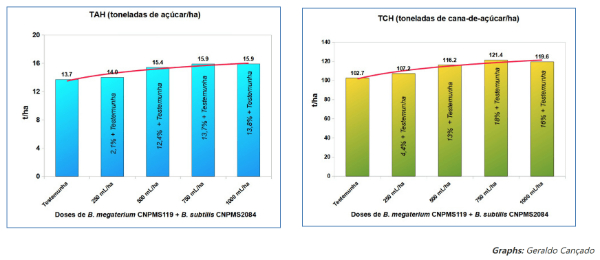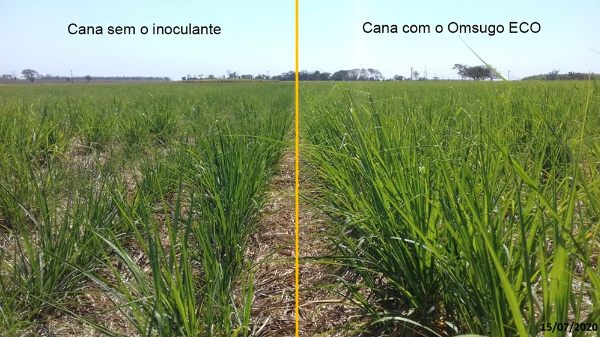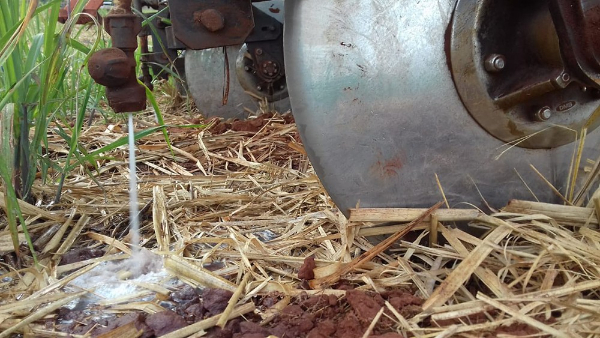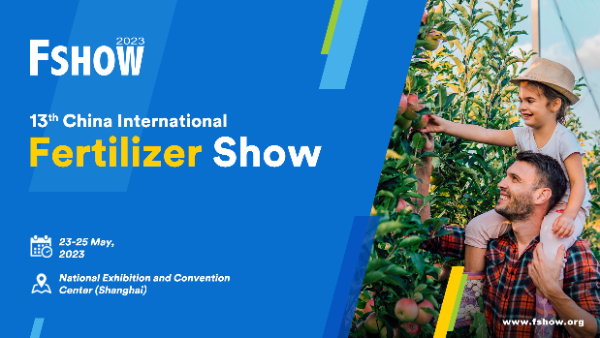
Exhibition time: 17-19 March, 2026 Shanghai, China
 中文
中文

Exhibition time: 17-19 March, 2026 Shanghai, China
 中文
中文
Two bacteria identified by Embrapa from its microorganism bank, which can increase phosphorus uptake by plants, have shown proven gains in sugarcane cultivation. According to Embrapa's research data, the productivity gain hit 20% with the first phosphorus solubilizing inoculant developed in Brazil with validated agronomic recommendations for sugarcane cultivation, named Omsugo ECO and traded by the multinational company Corteva Agriscience. The new bioinput reduces the need for phosphate fertiliser applications, resulting in economic gains and more environmental sustainability.
The two strains of bacteria that originated the inoculant – Bacillus subtilis (CNPMS B2084) and Bacillus megaterium (CNPMS B119) – were selected from the accessions in Embrapa Maize and Sorghum's Collection of Multifunctional Microorganisms and Phytopathogens (CMMF). "This collection has enormous potential to offer solutions to increase the yield of several crops, focusing on sustainability and decarbonization of agriculture", asserts Myriam Maia Nobre, Deputy Head of Technology Transfer at Embrapa Maize and Sorhum, informing that the collection has 11,000 records.
According to researcher Christiane Paiva, leader of the study's team, such bacterial strains have distinct mechanisms to promote higher root growth and solubilization of phosphorus adsorbed into the soil. "Our research focused on sugarcane, defining doses and recommendations for the use of the Omsugo ECO inoculant to find the best cost-benefit ratio for farmers. We had reports of average gains of around 12 tons per hectare in areas where farmers tested the product, compared to areas without application", she states.

Archive of Embrapa Maize and Sorghum's Collection of Multifunctional Microbial Organisms and Phytopathogens (CMMF), in Sete Lagoas, MG, Brazil, from which the bacteria of the new bioinput were selected.
With the bioinput, sugarcane plantations yielded an extra 20% in productivity
Experiments conducted in the 2020/2021 agricultural year by Embrapa and the São Paulo State Cooperative of Sugarcane Growers (Coplacana) in three Brazilian production areas have proven the efficiency of Omsugo ECO in this crop, a supplier of raw material for a highly strategic and economically important sector. Brazil is the world's largest producer of sugarcane, with 572.8 million tons produced for the current 2022/2023 harvest, according to data from the National Supply Company (Conab).
The scientists assessed the three most important indicators related to the performance of a sugarcane plantation: tones of sugarcane per hectare (TCH), which measures productivity; total recoverable sugar (TRS), an indicator representing sugarcane's capacity to be processed into sugar or alcohol; and tons of sugar per hectare (TSH).
The highest average productivity observed coincided with the plot that received the highest dosage of the liquid inoculant Omsugo ECO. "The productivity in TCH was 20% higher than in the treatment that did not use the inoculant or phosphate fertilizer", reports researcher Geraldo de Almeida Cançado, from Embrapa Digital Agriculture, who conducted the studies on cane crops.
In experimental conditions, the combined use of dosages above 500 ml/ha of inoculant and applying only half of the recommended amount of phosphate fertilizer was able to promote a significant increase in TCH and TSH parameters." Such indicators are respectively associated with the productivity and quality of the raw material in sugarcane cultivation, and corroborate the efficacy of the inoculant for that crop," the researchers reported.
The data were published on Boletim de Pesquisa e Desenvolvimento da Embrapa (Embrapa's Research and Development Bulletin), under the title Utilização de Inoculante Líquido Solubilizador de Fosfato Formulado à Base dos Isolados de Bacillus megaterium e Bacillus subitilis no Plantio da Cana-de-Açúcar (Use of Liquid Phosphate-Solubilizing Inoculant Based on Bacillus megaterium and Bacillus subitilis in Sugarcane Plantation), a paper whose authors are from Embrapa Digital Agriculture and from Embrapa Maize and Sorghum.

“We are bringing to market the first phosphorus solubiliser with proven agronomic recommendations for the crop. The technology has been researched over 18 years by the Embrapa team and now joins Corteva's large-scale development actions aimed at sugarcane cultivation. The market demand for organic products is growing and is expected to continue to do so in the coming years", reports Rodrigo Takegawa, Head of Sugarcane Marketing at Corteva Agriscience.
“The new product meets sugarcane growers' demand for innovative sustainable solutions. The solution focuses on using the phosphorus retained in the soil while significantly improving the use of phosphate fertiliser, contributing to a leap in productivity and longevity of the cane plantation", Takegawa states.
According to the Corteva executive, the Omsugo ECO project aims at making better use of not only phosphate fertilisers but also of the soil reserves. 'This solution is biologically, physically and chemically compatible with the main products used in the crop, including in conjunction with the vinasse, thus contributing to the current agricultural practices present in the plantations,' he asserts.

Comparison of plant development with and without the bioproduct
Better use of phosphate fertilization
“In a first for the sugarcane sector, BP Bunge implemented the Omsugo ECO test in around 10% of our plantation area throughout the 2022/2023 crop year. Based on ongoing tests, it is expected that it will be able to cut up to 15% of phosphate fertilization. Partial results in our experimental areas are very promising and point to an increase in the efficiency of the applied phosphate fertilizer and an increase in productivity", comments Mário Dias, corporate manager of Agronomic Development at BP Bunge Bioenergia.
BP Bunge Bioenergia is among the largest companies in the sugar sector in Brazil and is the world's top sugar exporter. The company is present in the states of Goiás, Mato Grosso do Sul, Minas Gerais, São Paulo and Tocantins, and it has 11 agroindustrial units with a combined milling capacity of 32.4 million tonnes of sugarcane per crop year.

Omsugo ECO application in the plantation
Source: Embrapa
